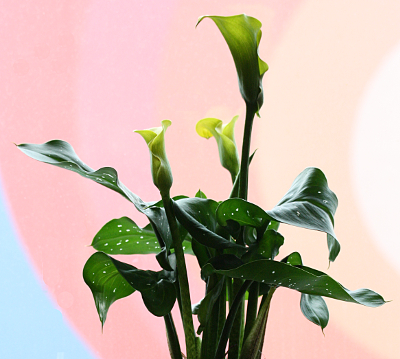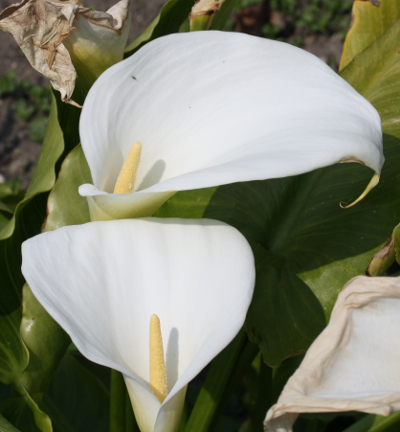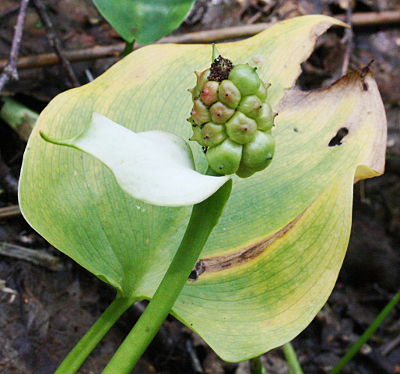Calloideae |

Room plants of the genus Zantedeschia traded falsely under the names Arum or Calla

Zantedeschia
aethiopica is the
archetype of all varieties and was first published by Linnaeus as Calla
aethiopica.

Large
populations of water arum (Calla palustris) have
become rare

Young infructescence of the water arum (Calla palustris)
The water arum in Germany is legally particularly protected. Its rarity is caused by destroying of its natural habitats: marshes, swamps and wetlands, by drainage. Only in nature reserves and partly outside of this, at drainage ditches or small ponds, they can still be found occasionally. Since they can be ordered from the garden centres, they also adorns some ponds.
The pollination of water arum is carried by small flies and
beetles
that can be attracted by the smell of carrion of the spadix. Some
biologists suspect additionally or exclusively a pollination through
the mucus of water snails (malacophily), although it is not clear how
this is to imagine in detail. Since snails slide on their trail of
slime and leave it behind, they can hardly carry anything in it. In
addition, the mucus glued the pollen grains as well as the pistils of
the female flowers and therefore the pollination can be even more
difficult.
After pollination, the water arum developed a tightly packed raceme with red berries, similar to those of the Arum. They are toxic like all parts of the plant. The berries contain 3–9 seeds. Asexual reproduction takes place via underground shoots that grow out of the rhizome and are easy to separate from it. As with many aquatic plants, the roots contain an air tissue that supplies them with oxygen. This aerenchyma lets swim the detached roots. In this way the plants can conquer new habitats, by germinating on another location, and can form a new population.
| Floral fomula: |
| *
A6–12
G3 superior ♂ * A6–12 G(0) |
Historical publications
Leonhart Fuchs (1501–1566) described the water arum as "klein Schlangenkraut" (small snake herb), which would be called in Greek Dracontion micron, in Latin Dracunculus minor. It possesses ivy-like, stalked leaves that would grow out of the root. The fruit was a cluster with many berries that would turn red. The German name would point out that it would bloom when the snakes slough their skins. The leaves, placed on bites from poisonous animals would pull out the toxins. With honey made into an ointment, it removes dark spots under the eyes. Otherwise, the effects of which are similar to that of Arum.Meaning of the species name
- palustris: lat. paluster = marshy, swampy
Interesting notes
In contrast to the Aroideae the Calla, at least in the lower part of the spadix, has hermaphroditic flowers.
-
From the calla lily, which now belongs to Zantedeschia, there are numerous cultivated varieties.
-
In 1988 Calla palustris was voted in Germany as flower of the year.